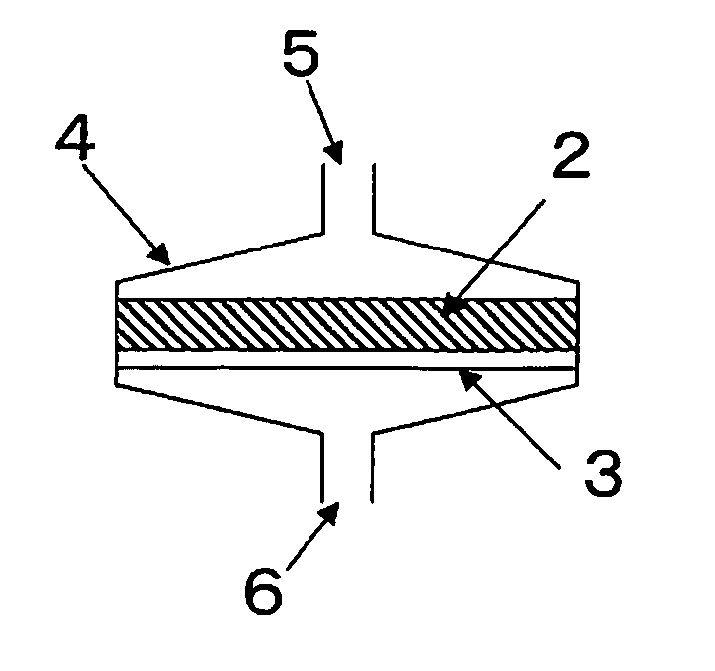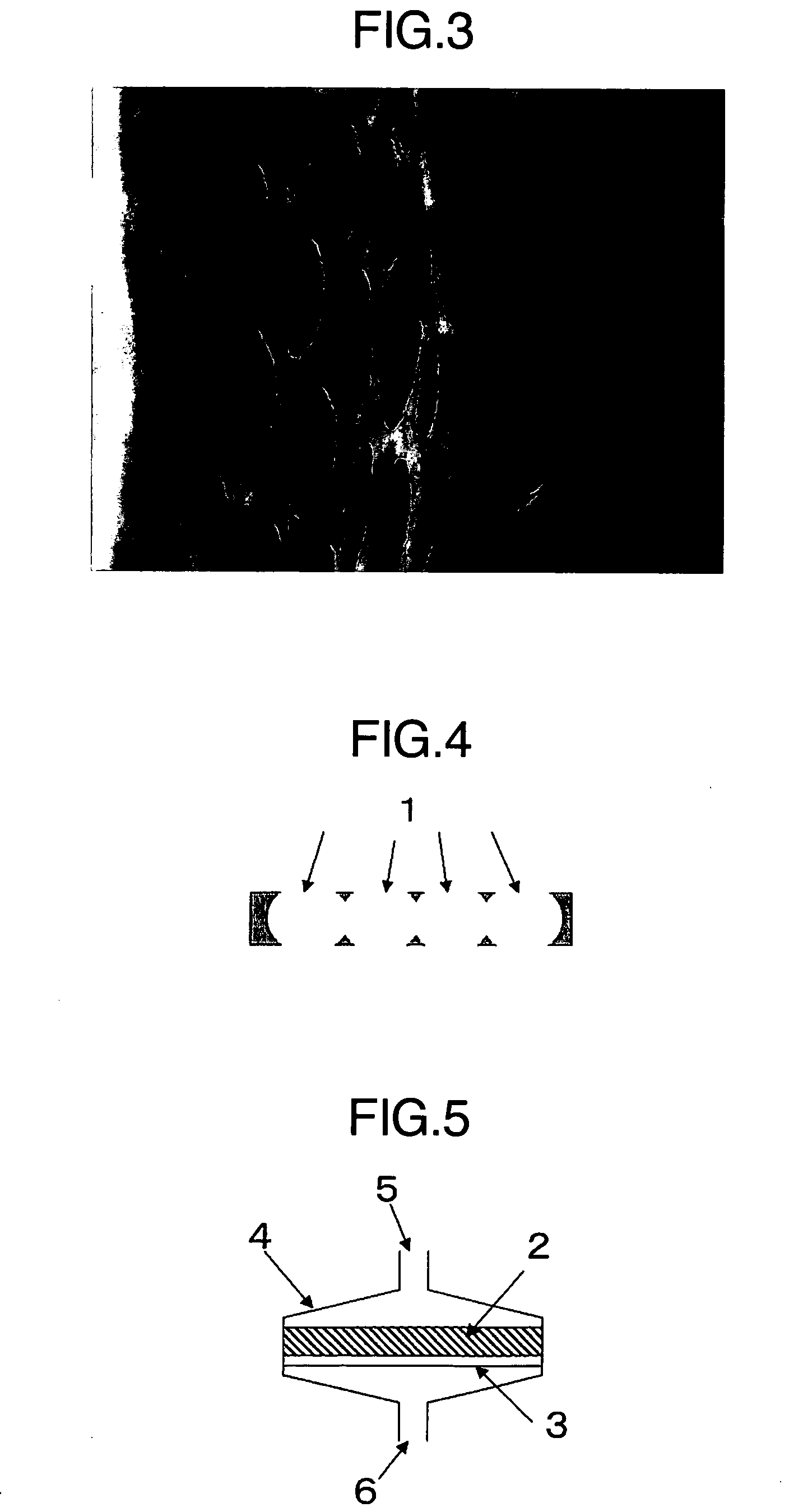Composite porous membrane and process for producing the same
a porous membrane and composite technology, applied in the field of composite porous membranes, can solve the problems of not being able to function as an effective filter (or pre-filter), not being able to effectively filter or eliminate cells, and being required for such a cell separation process and purification process, etc., to achieve high pore size uniformity, high opening ratio, and high uniformity
- Summary
- Abstract
- Description
- Claims
- Application Information
AI Technical Summary
Benefits of technology
Problems solved by technology
Method used
Image
Examples
example 1
1. Production of Coated Non-Woven Fabric Piece
1-1. Synthesis of Coating Polymer
Synthesis of 2-hydroxyethyl methacrylate (HEMA) / 2-(N,N-dimethylamino)ethyl methacrylate (DMAMA) Random Copolymer
[0251] 126 g (0.970 mol) of 2-hydroxyethyl methacrylate (HEMA, manufactured by Mitsubishi Rayon Co., Ltd.), 4.72 g (0.030 mol) of 2-(N,N-dimethylamino)ethyl methacrylate (DMAMA, manufactured by Wako Pure Chemical Industries, Co., Ltd.), and 460 g of ethanol were placed in a separable flask (capacity: 1 L). Thereafter, oxygen was removed by nitrogen bubbling, and the temperature of the reaction system was then increased to 60° C., while maintaining the inside of the container in a nitrogen atmosphere. Thereafter, a deoxidized ethanol solution (ethanol: 40.0 g), in which 0.822 g (5.01 mol) of azobisisobutyronitrile (AIBN, manufactured by Wako Pure Chemical Industries, Co., Ltd.) had been dissolved, was added dropwise to the above reaction system over approximately 1 hour. The obtained mixture...
example 2
[0267] A composite porous membrane was produced in the same manner as in the section 2 of Example 1 with the exception that dichloromethane was used instead of chloroform as a solvent for the used hydrophobic organic solvent solution.
[0268] The opening ratio, D, σd / D, the percentage of through-pores, T, and σt / T of the porous membrane of the obtained composite porous membrane are as shown in Table 1.
[0269] An adhesion test was carried out. As a result, it was found that the porous membrane was not separated from the supporting porous membrane.
[0270] A simple tensile test was also carried out. As a result, it was found that a test piece was not broken with a force of 50 g. In addition, no cracks were observed on the porous membrane.
[0271] A water permeation test was carried out using pure water. The result was found to be 15.4 ml / cm2 / min.
example 3
[0272] A composite porous membrane was produced in the same manner as in the section 2 of Example 1 with the exception that polysulfone (PSU: manufactured by Teijin Acomo Engineering Plastics, UDEL P-3500) was used instead of PCL as a solute for the used hydrophobic organic solvent solution.
[0273] The opening ratio, D, σd / D, the percentage of through-pores, T, and σt / T of the porous membrane of the obtained composite porous membrane are as shown in Table 1.
[0274] An adhesion test was carried out. As a result, it was found that the porous membrane was not separated from the supporting porous membrane.
[0275] A simple tensile test was also carried out. As a result, it was found that a test piece was not broken with a force of 50 g. In addition, no cracks were observed on the porous membrane.
[0276] A water permeation test was carried out using pure water. The result was found to be 14.2 ml / cm2 / min.
PUM
| Property | Measurement | Unit |
|---|---|---|
| pore diameter | aaaaa | aaaaa |
| pore diameter | aaaaa | aaaaa |
| area | aaaaa | aaaaa |
Abstract
Description
Claims
Application Information
 Login to View More
Login to View More - R&D
- Intellectual Property
- Life Sciences
- Materials
- Tech Scout
- Unparalleled Data Quality
- Higher Quality Content
- 60% Fewer Hallucinations
Browse by: Latest US Patents, China's latest patents, Technical Efficacy Thesaurus, Application Domain, Technology Topic, Popular Technical Reports.
© 2025 PatSnap. All rights reserved.Legal|Privacy policy|Modern Slavery Act Transparency Statement|Sitemap|About US| Contact US: help@patsnap.com



